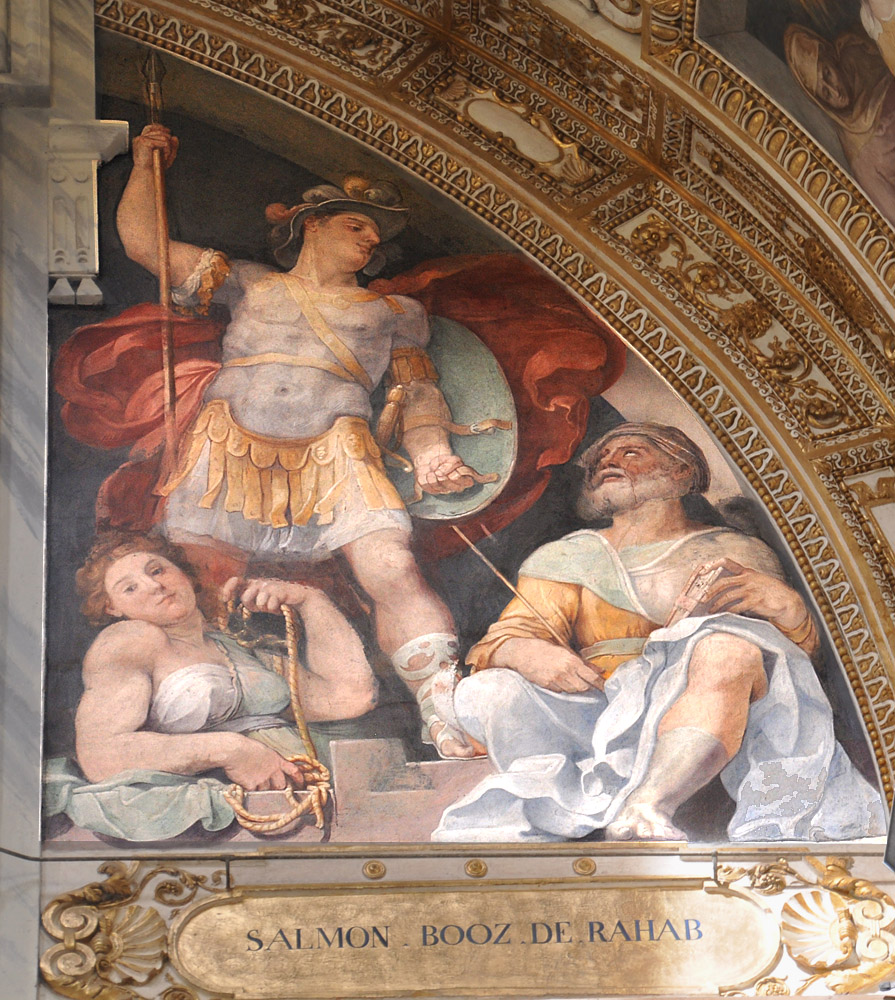
Lattanzio Mainardi (in the workshop of Cesare Nebbia)
Boaz with His Parents Salmon and Rahab
1587-89
Fresco
Sistine Chapel of the Basilica of Santa Maria Maggiore
The chapel features a number of frescos like this that picture the ancestors of Jesus listed in Matthew 1:1-17.
Rahab, on the lower left of the image, is the Canaanite prostitute who helped Joshua's spies sneak out of Jericho by letting them down from a window with a rope, for which her family was spared when Joshua conquered the city (Joshua 2:1-21). The fresco uses the rope as her attribute. Her profession may be suggested by her bold gaze at the viewer, her youth, and her generous bosom. But at the same time her muscular arms may make of her a "strong woman" such as are prized in the Old Testament and who in the Glossa Ordinaria signify the Church and the Bible (III, 1740-41).
Rahab's husband Salmon, standing behind her, is mentioned only in passing in the genealogies at Ruth 4:18-22 and Matthew 1:4-5, but the Glossa Ordinaria says he was "a prince of the tribe of Judah," his marriage to the foreign woman being a type of Christ's embrace of the Church of the Gentiles (V, 35). The fresco expresses his princely status by dressing him as a Roman military officer.
Boaz also married a foreign woman, Ruth the Moabite (Ruth 2-4). The Glossa interprets his name to mean "strong" and cites Isaiah 40:10, "Behold, the Lord God comes in strength." Thus, like his father, he is a type of Christ and his bride a type of the Church (V, 36). The rod in his hand may refer to the meaning of his name. There is nothing specific in scripture or the Glossa that might explain the book on his knee, unless it be a reference to the two "strong women" in his life.
Boaz and Ruth were the great-grandparents of King David, and thus Jesus was a descendant of two women of the Gentiles.
View this image in full resolution.
Photographed at the basilica by Richard Stracke, shared under Attribution-NonCommercial-ShareAlike license. Attribution to Mainardi and Nebbia by Wikipedia.